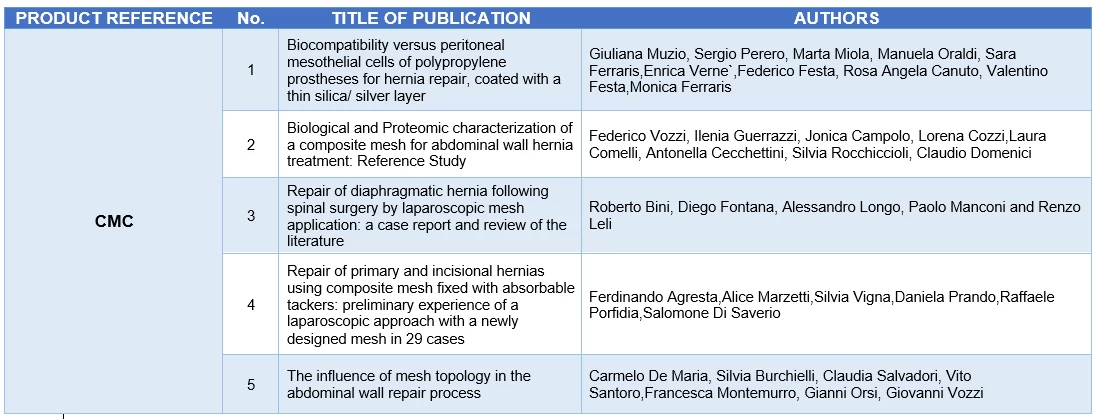The influence of mesh topology in the abdominal wall repair process
Abstract
The tissue integration and the formation of adhesions in the repair of abdominal wall defects are principally led to the topology and the mechanical properties of implanted prosthesis. In this study we analyzed the influence of the topology of the meshes for abdominal wall repair, made of polypropylene (PP), evaluating its ability to prevent and to minimize the formation of adhesions, and to promote tissue ingrowth. Two series of in vivo studies were performed. In the first, two types of PP meshes, a lightweight macroporous mesh (LWM) and a heavyweight microporous mesh (HWM) were compared with determine the optimal porosity for tissue integration. In the second, a composite mesh, Clear Mesh Composite (CMC), made of a LWM sewn on a PP planar smooth film, was compared with a PP planar film, to demonstrate how two different topologies of same material are able to induce different tissue integration with the abdominal wall and different adhesion with internal organs. In both studies, the prostheses were implanted in Wistar rats and histological analysis and mechanical characterization of tissue coupled with the implants were performed. LWM showed better host tissue ingrowth in comparison to HWM. CMC prosthesis showed no adhesions to the viscera and no strong foreign body reaction, moreover its elasticity and anisotropy index were more similar to that of natural tissue. These results demonstrated that the surface morphology of PP surgical meshes allowed to modulate their repair ability. © 2015 Wiley Periodicals, Inc. J Biomed Mater Res Part B: Appl Biomater, 104B: 1220-1228, 2016.
Keywords: histological analysis; in vivo study; mechanical properties; polypropylene mesh; surface morphology.

https://pubmed.ncbi.nlm.nih.gov/26097153/


